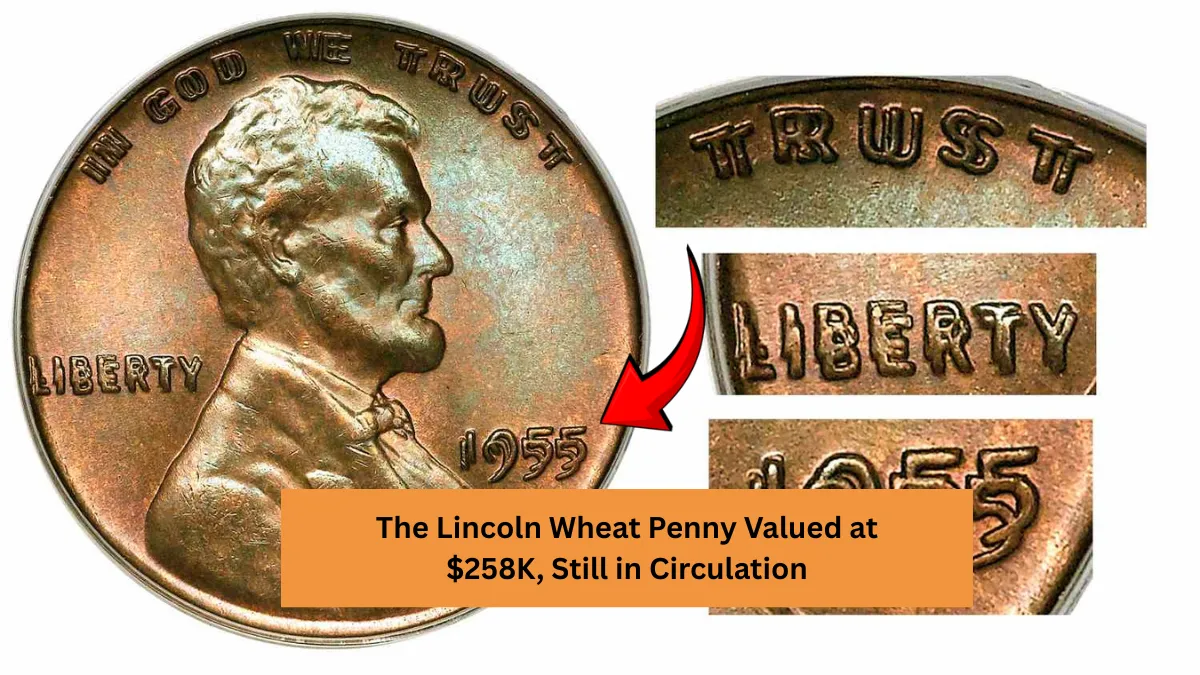Imagine reaching into your pocket and pulling out a penny — nothing unusual, right? But what if that penny was actually worth a staggering $258,000? It might sound like a dream, but certain Lincoln Wheat pennies, considered among the most iconic coins in American history, have sold for hundreds of thousands of dollars. Even more fascinating is the fact that some of these rare pennies are still circulating in everyday change, waiting to be discovered.
In this article, we’ll explore why the Lincoln Wheat penny is so special, what makes some of them incredibly valuable, and why you might already be carrying a hidden treasure.
What Is the Lincoln Wheat Penny?
The Lincoln Wheat penny was introduced in 1909 to celebrate the 100th birthday of Abraham Lincoln, the 16th President of the United States. It was the first U.S. coin to feature a real person’s image — Lincoln’s profile — on the front (known as the obverse). The back of the coin (the reverse) features two stalks of wheat, which is how it got its popular name.
Produced from 1909 through 1958, the Wheat penny was a common form of currency for nearly 50 years. Millions were made, and most are now worth just a few cents. But some specific dates, mint marks, and minting errors have made certain Wheat pennies incredibly rare and valuable.
Why Are Some Lincoln Wheat Pennies Worth So Much?
The value of a Lincoln Wheat penny depends on several important factors:
1. Rarity
Some pennies were minted in very limited numbers or have rare characteristics that make them stand out. For example, the 1909-S VDB penny — made at the San Francisco Mint and designed by Victor David Brenner — is famous for being one of the rarest Lincoln pennies.
2. Minting Errors
Errors during the coin-making process can make a penny much more valuable. Examples include the “doubled die” penny, where the design appears doubled, or coins with missing details or off-center strikes. These unusual features make collectors eager to get their hands on them.
3. Condition
A coin’s condition is critical. Coins in “mint state” or near-perfect condition — showing no wear or damage — can fetch a much higher price than worn or damaged coins. Professionals use grading services such as PCGS or NGC to evaluate and certify a coin’s condition.
4. Historical Significance
Some pennies have a fascinating backstory or are connected to important historical moments, which adds to their collectible value.
The $258,000 Lincoln Wheat Penny
One of the most remarkable stories involves a Lincoln Wheat penny valued at $258,000 that was discovered in everyday circulation. This particular penny stands out because it is a rare date and mint mark, preserved in excellent condition. When authenticated and graded by experts, it was confirmed as a genuine rarity, leading to its high valuation.
This coin wasn’t locked away in a vault or displayed in a museum. Instead, it was found mixed in with regular change — a testament to how valuable items can sometimes be hiding in the most ordinary places.
Why Are Such Valuable Coins Still Found in Circulation?
It may seem unbelievable that coins worth hundreds of thousands of dollars could still be in circulation, but there are a few reasons this happens:
- Unaware Owners: Many people don’t realize they own rare coins. To the average person, a Wheat penny just looks like a penny.
- Visual Similarity: Unless you know exactly what to look for, rare pennies look very similar to common ones.
- Coins Get Passed Around: Coins travel through many hands, banks, and machines over decades. Valuable pennies can be lost in the shuffle.
- Forgotten Collections: Some valuable coins were stored away and then unknowingly spent or given away.
How to Spot a Valuable Lincoln Wheat Penny
If you want to see whether your pennies might hold hidden value, here’s how to check:
- Look at the Date and Mint Mark: Certain years and mint marks are rare. Examples include 1909-S VDB, 1914-D, and 1922 “No D” pennies.
- Check for Errors: Look closely for doubled designs, missing features, or unusual marks.
- Condition Matters: Coins with sharp details and no signs of wear are more valuable.
- Do Not Clean the Coin: Cleaning can damage the coin and reduce its value.
- Seek Expert Opinion: If you suspect a coin is rare, get it authenticated by a professional grading company like PCGS or NGC.
The Emotional and Historical Value of Lincoln Wheat Pennies
Besides money, these pennies carry historical importance. They connect us with America’s past and commemorate one of its most beloved presidents. Each penny has a story — from the people who used it daily to the hands it passed through over decades.
Finding a rare Lincoln Wheat penny is like holding a piece of history in your hand.
What Should You Do if You Find a Rare Penny?
If you believe you’ve found a valuable Lincoln Wheat penny, follow these steps:
- Don’t Clean or Alter It: Keep the coin in its current state.
- Handle Carefully: Avoid touching the coin by its face to prevent damage.
- Get Professional Authentication: Submit the coin to a trusted grading service. This helps confirm its authenticity and condition, which affects value.
- Consider Selling or Keeping: Decide whether you want to keep the coin as a collectible or sell it. Rare coins can fetch top dollar at auctions or through private collectors.
Conclusion: Could Your Spare Change Hold $258,000?
It’s an exciting thought — that you might have a valuable Lincoln Wheat penny hidden in your everyday change. While rare, such finds do happen, and many valuable pennies remain undiscovered in circulation.
The key is awareness and knowledge. Understanding what makes these pennies valuable can help you recognize a treasure if you see one. So next time you dig through your loose change, take a closer look — you might just be holding a coin worth a small fortune.

